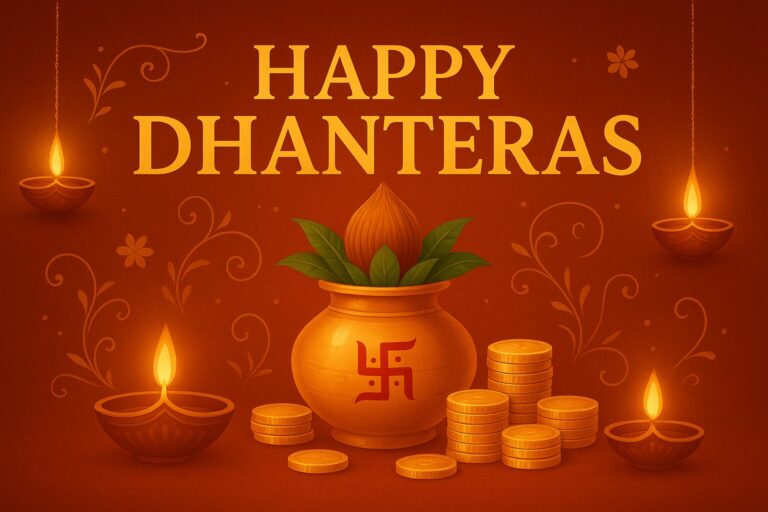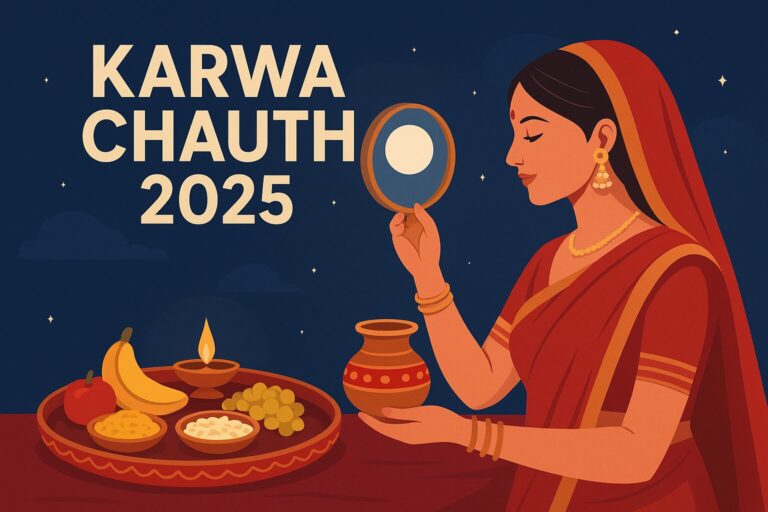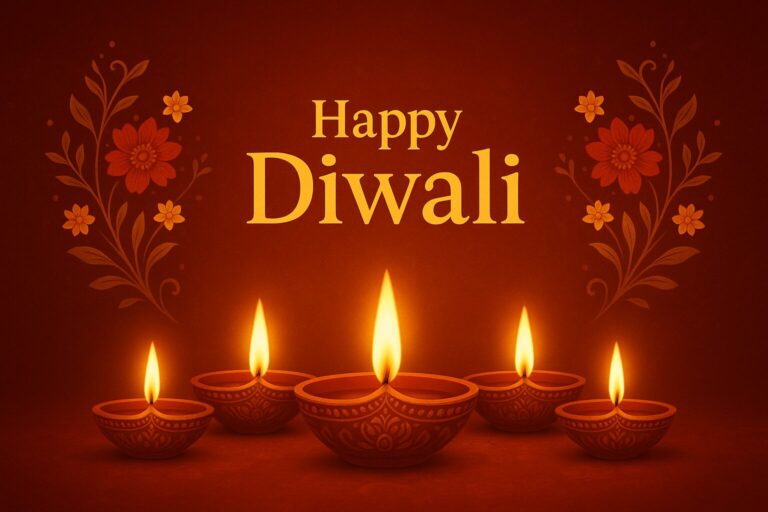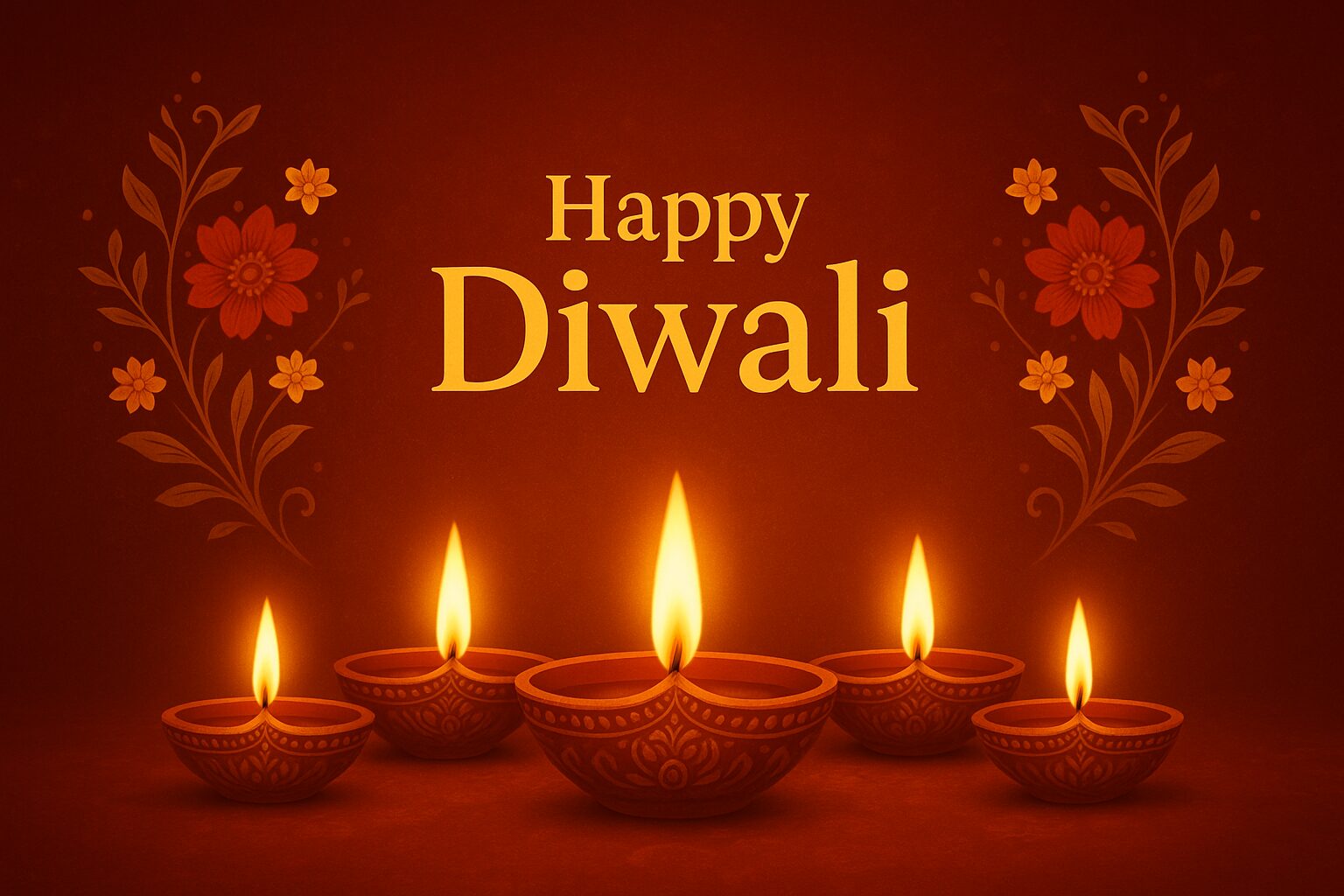
Diwali 2025: Date, Lakshmi Puja Muhurat, Significance and Celebration Guide
Diwali, also known as Deepavali, is one of the most awaited festivals in India. It’s called the “Festival of Lights”, symbolizing the victory of light over darkness, good over evil, and knowledge over ignorance. Streets, homes, and temples glow with diyas and decorations, spreading joy and positivity everywhere.
In 2025, Diwali will be celebrated from October 18 to October 22, with the main day of Lakshmi Puja falling on October 20, 2025 (Monday). The festival lasts for five days- each with its own spiritual meaning and traditional rituals.
Diwali 2025 Festival Dates
| Day | Date (2025) | Festival Name | Significance |
|---|---|---|---|
| Day 1 | October 18, Saturday | Dhanteras | Worship of Goddess Lakshmi, Lord Kuber, and Dhanvantari. People buy gold, silver, and new items for prosperity. |
| Day 2 | October 19, Sunday | Choti Diwali / Naraka Chaturdashi | Celebrates Lord Krishna’s victory over demon Narakasura. Houses are cleaned, and lamps are lit in the evening. |
| Day 3 | October 20, Monday | Diwali / Lakshmi Puja | The most important day dedicated to Goddess Lakshmi and Lord Ganesha. Homes glow with diyas, lights, and decorations. |
| Day 4 | October 21, Tuesday | Govardhan Puja / Annakut | Devotees worship Lord Krishna and prepare large food offerings (Annakut). |
| Day 5 | October 22, Wednesday | Bhai Dooj / Yama Dwitiya | Celebrates the sacred bond between brothers and sisters. Sisters pray for their brothers’ long life. |
Lakshmi Puja Muhurat 2025
The main Diwali Puja will be held on Monday, October 20, 2025, when Amavasya Tithi is active.
- Amavasya Tithi begins: October 20, 2025 – 3:44 PM
- Amavasya Tithi ends: October 21, 2025 – 5:54 PM
- Pradosh Kaal (evening time): 5:46 PM to 8:18 PM
- Lakshmi Puja Muhurat (New Delhi): 7:08 PM to 8:18 PM
- Vrishabha Kaal: 7:08 PM to 9:03 PM
(Note: Muhurat timings may vary slightly depending on your city. Always check your local Panchang before performing Puja.)
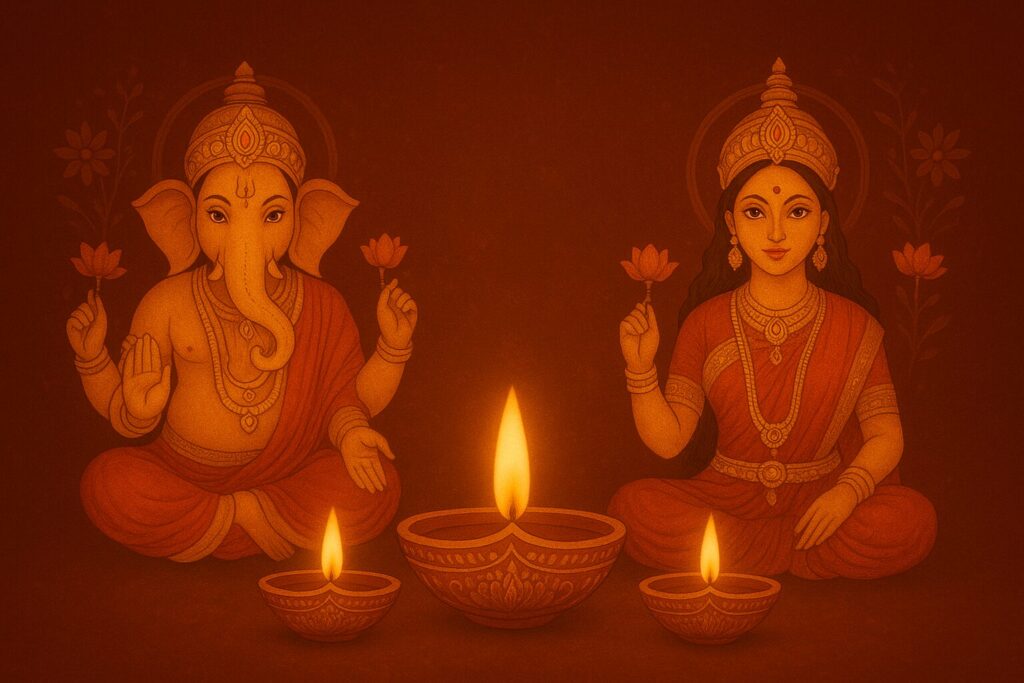
During this period, devotees perform Lakshmi-Ganesha Puja to invite wealth, peace, and happiness into their homes. It is also believed that Goddess Lakshmi visits clean and well-lit homes, so cleanliness and lighting are key rituals.
Significance of Diwali
Diwali holds immense cultural, spiritual, and emotional importance. Across India, different regions celebrate the festival for various reasons yet the essence remains the same: light defeating darkness and good conquering evil.
1. Victory of Lord Rama
In North India, Diwali marks Lord Rama’s return to Ayodhya after 14 years of exile and victory over Ravana. People welcomed him with rows of lamps giving the festival its name “Deepavali.”
2. Worship of Goddess Lakshmi
For business communities, it marks the beginning of a new financial year. Devotees perform Lakshmi Puja to seek prosperity, wealth, and fortune.
3. Lord Krishna and Narakasura
In South India, Diwali celebrates Lord Krishna’s victory over Narakasura, symbolizing the victory of truth and righteousness.
4. Lord Mahavira’s Nirvana
For Jains, Diwali marks the day of Lord Mahavira’s enlightenment, representing spiritual awakening.
5. Sikh Celebration of Bandi Chhor Diwas
For Sikhs, it commemorates Guru Hargobind Sahib Ji’s release from imprisonment, symbolizing freedom and light.
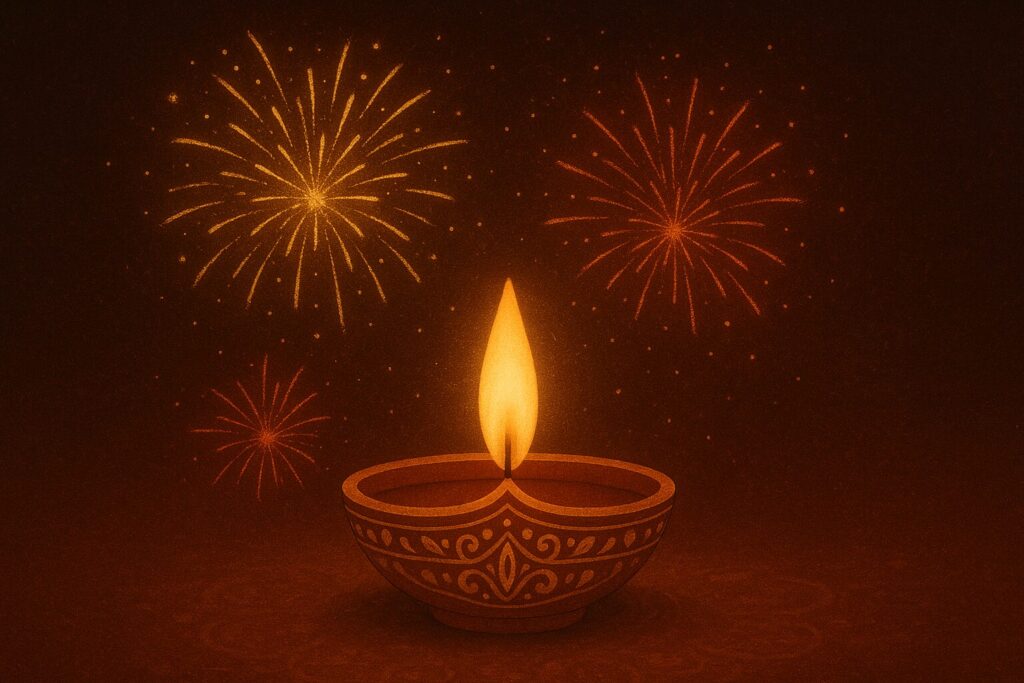
Rituals and Traditions of Diwali 2025
Here’s how Diwali is traditionally celebrated across India:
1. Cleaning and Decorating Homes
Weeks before Diwali, people clean, paint, and decorate their homes with rangoli, torans, flowers, and colorful lights to welcome Goddess Lakshmi.
2. Dhanteras Shopping
On Dhanteras, buying gold, silver, utensils, or new household items is considered highly auspicious. Many also begin new ventures or investments on this day.
3. Lighting Diyas
Earthen lamps filled with oil or ghee are lit to remove darkness. People decorate their homes, balconies, and courtyards with diyas and fairy lights.
4. Lakshmi-Ganesha Puja
The main ritual of Diwali. Devotees worship Goddess Lakshmi (wealth), Lord Ganesha (wisdom), and Lord Kuber (prosperity). Offerings include sweets, flowers, fruits, incense, and coins.
5. Sharing Sweets and Gifts
Families exchange gifts, sweets, and dry fruits. It strengthens bonds and spreads love among friends and relatives.
6. Fireworks and Celebration
After the puja, people celebrate with firecrackers, sparklers, and light shows though eco-friendly fireworks are now encouraged.
7. Charity and Donations
Many people believe in sharing blessings. Donating food, clothes, or money to the poor is considered one of the most virtuous acts of Diwali.
Eco-Friendly Diwali
As awareness about the environment grows, many families are now celebrating an eco-friendly Diwali. Here are some ways to make your celebration sustainable:
- Use clay diyas instead of plastic lights.
- Prefer LED bulbs to reduce electricity use.
- Avoid loud crackers; choose eco-friendly fireworks.
- Decorate with organic rangoli colors and natural flowers.
- Share happiness through charity and kindness rather than excess spending.
Celebrating mindfully not only protects nature but also aligns with Diwali’s real spirit- peace, love, and purity.
Safety and Preparation Tips
- Buy puja items early to avoid last-minute rush.
- Keep first aid and water nearby during fireworks.
- Avoid overcrowded areas for safety and air quality.
- Protect pets and elders from loud noises.
- Switch off unnecessary lights to prevent overloads.
- Avoid synthetic clothes while lighting lamps or crackers.
Conclusion:
Diwali 2025 is not just a festival of lights it’s a festival of hope, gratitude, unity, and positivity. As diyas illuminate homes, they also light hearts with love and togetherness. Whether it’s worshipping Goddess Lakshmi, sharing sweets, or simply spreading smiles every part of Diwali reminds us that light always triumphs over darkness.
Celebrate this Diwali with faith, joy, and responsibility.
✨ Wishing you a safe, prosperous, and eco-friendly Diwali 2025! ✨
Also read: Dhanteras 2025- The Festival of Wealth, Prosperity, and Good Fortune

